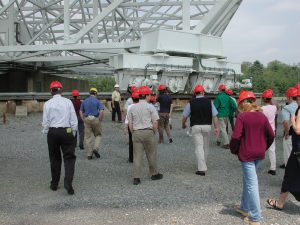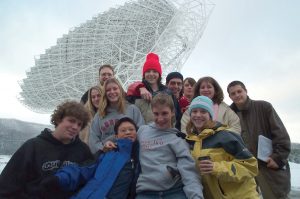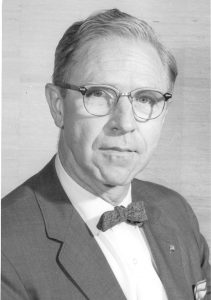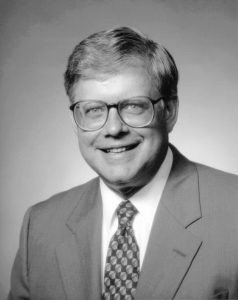An out-of-this-world tour of some of the world’s most unique telescopes leaves the Green Bank Science Center on a regular schedule. Visitors will get a live tour of our working radio astronomy observatory and disembark to stare up at the largest moving structure on Earth, the Green Bank Telescope (GBT).


Teachers Get a Tour
Professional development for teachers is a part of the extensive education and outreach programs run out of the Green Bank Science Center. Here, a group of teachers have donned hardhats to get an up-close look at the world’s largest moving telescope, the Green Bank Telescope (GBT).

Steel Masterpiece
Over 13,000 steel beams support the world’s largest fully-steerable telescope in Green Bank, West Virginia. The Green Bank Telescope (GBT) weighs 17 million pounds, and has been observing the radio skies since 2000.

School Groups at the GBT
Each year between 2500-3000 scouts, students and teachers visit Green Bank, West Virginia, typically in small groups of a few dozen students with their teachers, for sessions lasting several days. They are housed in the site “bunkhouse” and take meals in the cafeteria. They receive in-depth tours of the electronics labs, training, use of the 40-Foot Telescope, and interactions with the site staff.

Richard Emberson
Richard Emberson was the assistant to the President of Associated Unviersities, Inc at the time of the founding of NRAO. In 1957, he became the project manager for the development of Green Bank, West Virginia as our observatory site. He was a trained scientist and a skilled administrator. While construction delays continued to plague the 140-foot (43-meter) telescopes project, Emberson’s leadership skills supported the Observatory’s efforts to fund, design, and build a world-class telescope in the interim, the 300-foot. After AUI, he became the Executive Director of the IEEE.

Paul Vanden Bout
Paul Vanden Bout became Director of the National Radio Astronomy Observatory on 1 January 1985 and served until 31 May 2002. Vanden Bout’s directorship included the construction of both the Very Long Baseline Array and the Green Bank Telescope, the linkage of the VLBA Pie Town antenna with the Very Large Array, planning for and initiation of VLA upgrade, two major radio telescope surveys, the design and development of the MMA, and its evolution into ALMA. He played a key role in forging the ALMA international partnership, and funding for ALMA construction was approved before he stepped down as Director.





